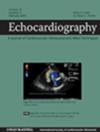Impaired Aortic Biomechanical Properties in Patients With Severe Obstructive Sleep Apnea Syndrome
Abstract
Purpose
Evaluating the biomechanical properties of the aorta is crucial for assessing cardiovascular risk and preventing disease progression. The aim of this study was to evaluate the biomechanical properties of the ascending aorta (AA) in severe obstructive sleep apnea syndrome (OSAS) patients with or without hypertension (HT) via velocity vector imaging (VVI).
Methods
A total of 68 patients with severe OSAS were selected, 35 of whom were included in the simple OSAS group and 33 of whom were included in the OSAS + HT group, and 40 volunteers without these two disorders who were taken as the control group. AA biomechanical properties, that is, AA longitudinal strain (ALS), AA circumferential strain (ACS), and fractional area change (FAC), were evaluated via VVI. Pulsed Doppler early transmitral peak flow velocity (E), early diastolic mitral annular velocity (e’), left ventricular (LV) global longitudinal strain (GLS), and the AA dimension (AD) were also measured.
Results
ALS (mean ± SD; 32.8% ± 11.9% and 19.7% ± 7.6% vs. 40.6% ± 15.6%, p = 0.006), ACS (mean ± SD; 11.8% ± 3.5% and 8.6% ± 2.7% vs. 16.5% ± 5.8%, p = 0.02), and FAC (mean ± SD; 21.0% ± 5.3% and 12.4% ± 3.8% vs. 32.8% ± 9.7%, p = 0.004) were significantly lower in the patient groups (OSAS and OSAS + HT, respectively) than in the control group. LV systolic and diastolic functions were also impaired in the patient groups. Compared with volunteers without OSAS and HT, these patients had a greater AD and E/e’ ratio and a lower GLS (p < 0.01). The aortic biomechanical properties were strongly correlated with the LV function and sleep parameters.
Conclusion
AA biomechanical properties are impaired in patients with severe OSAS, especially those with HT. Impairments in these aortic biomechanical properties are associated with diminished LV function and abnormal sleep parameters. This discovery may help clinicians identify and manage potential cardiovascular risks in OSAS patients. Further large-scale longitudinal studies are needed to confirm the potential predictive value of aortic events (e.g., aortic aneurysm or dissection) in patients with OSAS.

 求助内容:
求助内容: 应助结果提醒方式:
应助结果提醒方式:


